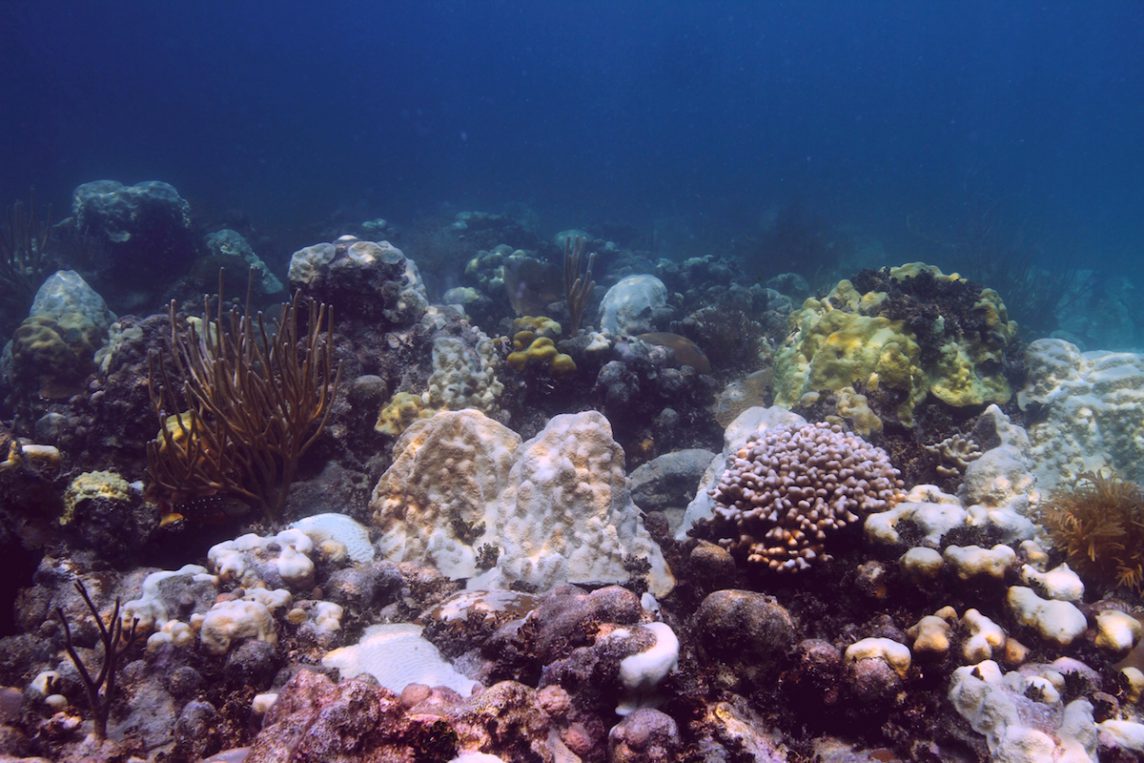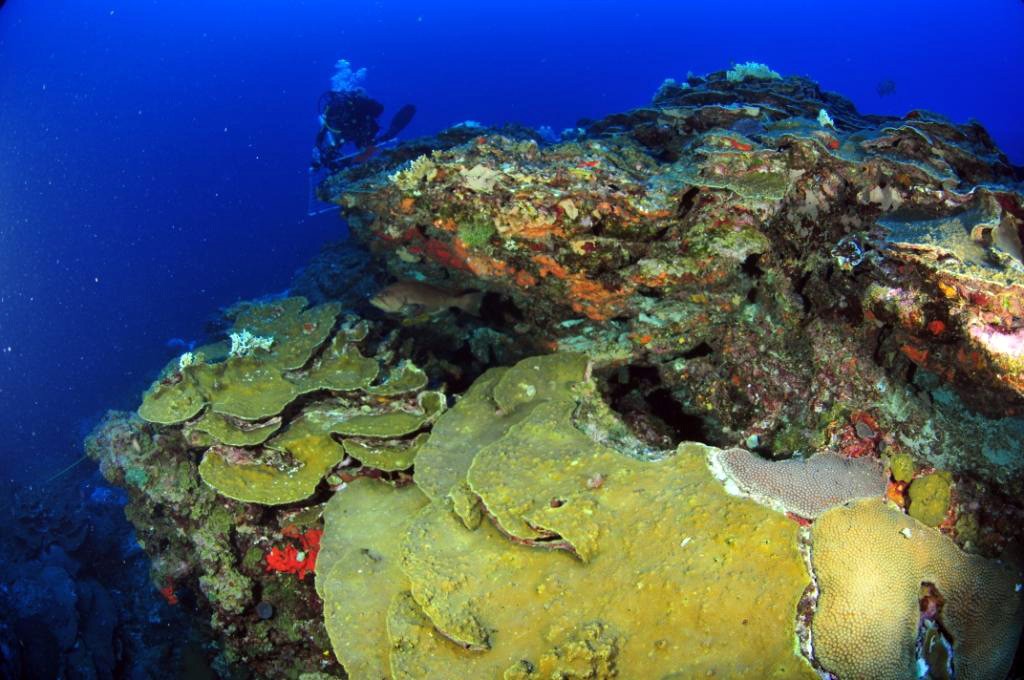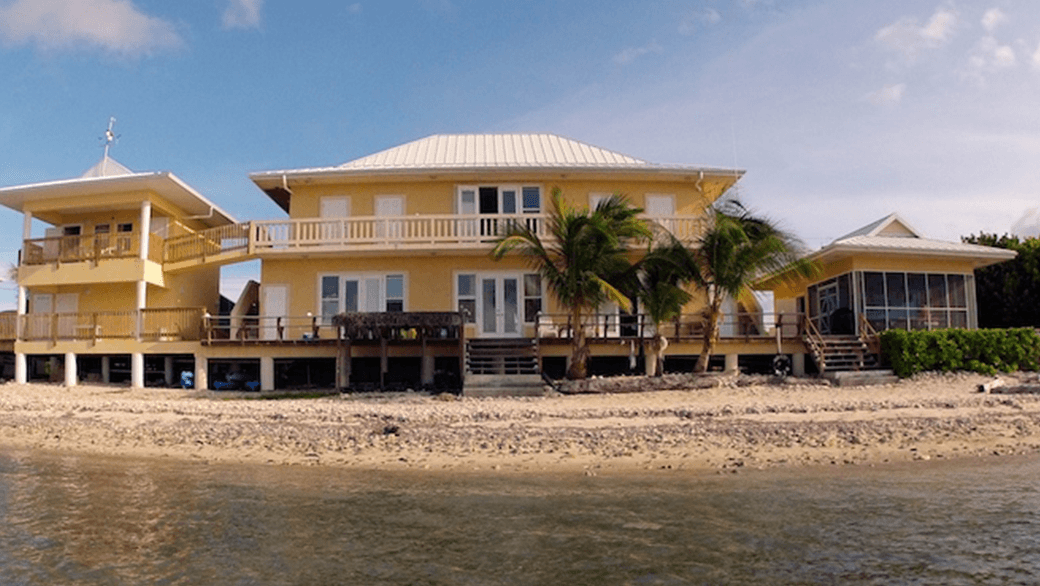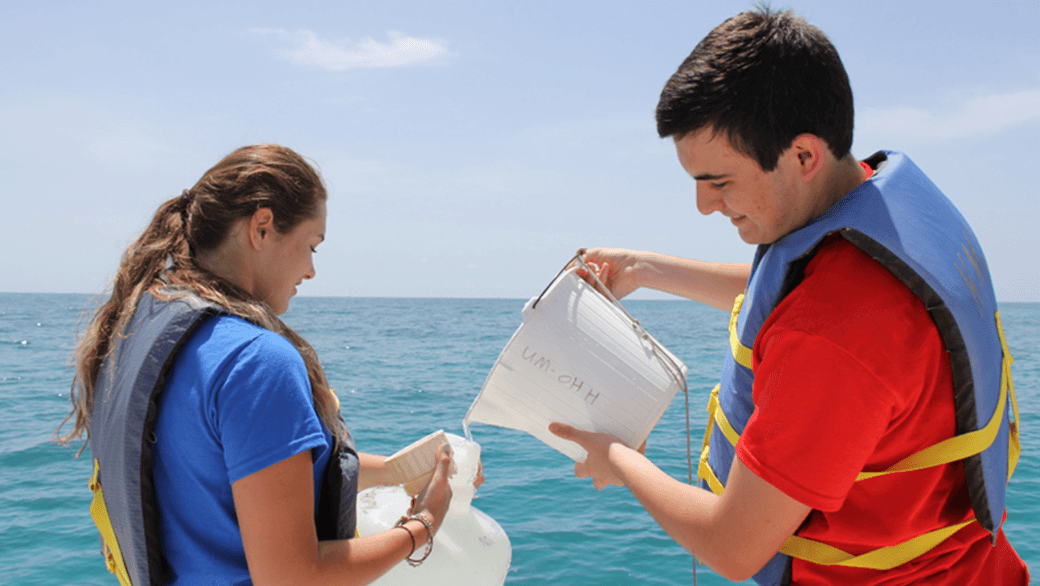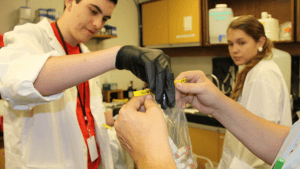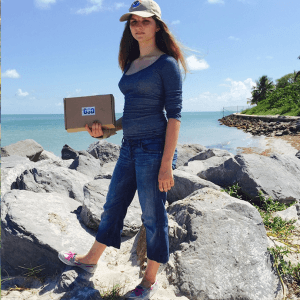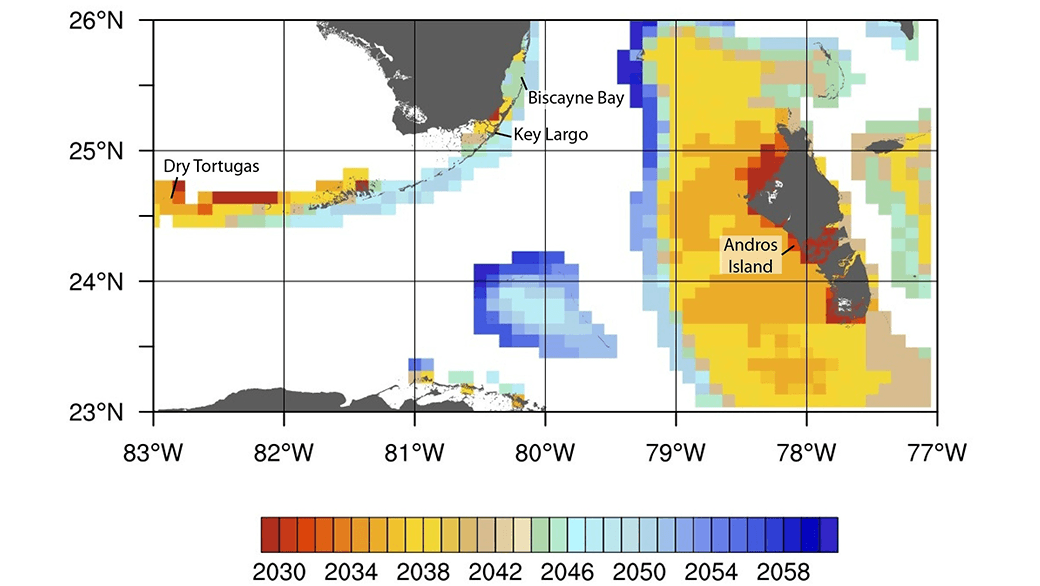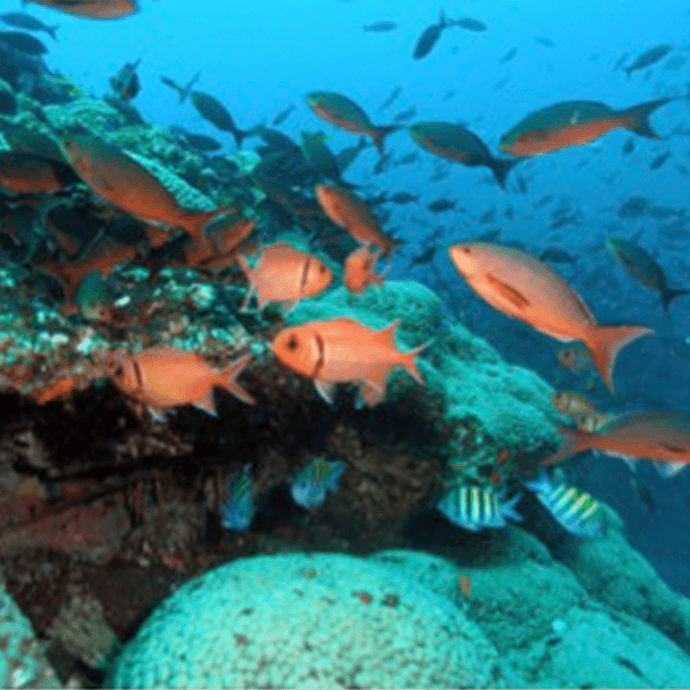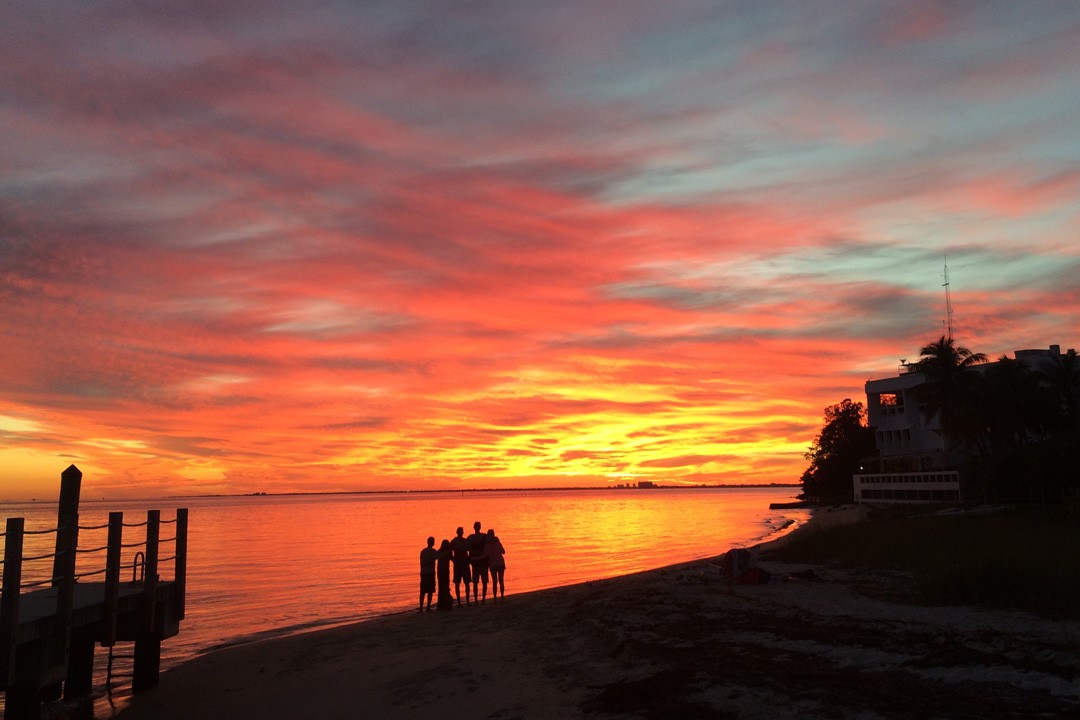NOAA selected AOML oceanographer Dr. Rik Wanninkhof in October 2015 to become a Senior Technical Scientist, the highest attainable level for federal research scientists within NOAA. Rik is an internationally recognized authority on air-sea gas transfer with close to 25 years of experience studying the effects of atmospheric carbon dioxide on the ocean. Senior Technical Scientist positions are held by individuals who achieve national and/or international distinction in their field through their high-level research.
In a new study published April 1 in Global Change Biology, NOAA oceanographers and colleagues have developed a new method to produce high-resolution projections of the range and onset of severe annual coral bleaching for reefs in the Gulf of Mexico and Caribbean. The scientists built on a previous study that used global climate models from the Fifth Assessment Report of the Intergovernmental Panel on Climate Change that produced projections at a very coarse resolution of about 70 miles or 100 kilometers. By using a regional oceanic model and an approach called statistical downscaling, the scientists calculated when increasingly warmer waters would cause severe bleaching on an annual basis. The resulting local-scale projections of bleaching conditions, at a resolution of about 6 miles or 10 kilometers, will help managers include climate change as a consideration in planning and conservation decisions.
Coral bleaching is a major threat to coral ecosystems and primarily occurs when ocean temperatures are warmer than has been normal in the past. Temperature stress disrupts the relationship between corals and the algae that live within their tissues; a relationship that usually benefits both parties. The algae are expelled as they cannot photosynthesize under the extreme conditions. The white limestone coral skeleton becomes visible through tissue that is now transparent since the expelled algae give corals their vibrant colors. Extensive coral bleaching events, called ‘mass bleaching’, have increased in frequency and severity over the past two decades and have contributed to overall reef loss globally.
The loss of coral reefs results in significant ecological, social and economic loss. Coral reefs provide rich habitat for valuable fisheries that people depend on for food. They also serve as protective buffers to coastlines by absorbing wave energy from storms, and they boost local economies by attracting tourists who fish, dive and explore these underwater treasures.
A main conclusion of the study is that almost all coral reef locations in the Gulf of Mexico and Caribbean are projected to experience bleaching conditions every yearby mid-century. This result applies to the past coarse-resolution projections as well as the new high-resolution projections. However, the high-resolution projections show there is great within-country variation in the projected timing of extreme conditions. There are locations within many countries where some reefs are projected to experience annual bleaching conditions 15 or more years later than other locations. This applies to reefs in Florida, the Bahamas, Cuba, Puerto Rico, the Dominican Republic, Turks and Caicos, and Mexico. Reefs projected to experience bleaching conditions later are conservation priorities. These locations are a type of refuge, and are among the locations most likely to persist as the climate changes.
“At these locations, referred to in the study as ‘relative refugia’, lower rates of temperature increase and fewer extreme events mean reefs have more time to acclimate and adapt to climate change,” says study lead Dr. Ruben van Hooidonk, a coral and climate researcher with the Cooperative Institute for Marine and Atmospheric Studies at the University of Miami’s Rosenstiel School and NOAA’s Atlantic Oceanographic and Meteorological Laboratory.
Coastal and environmental managers, as well as conservation staff, throughout southern Florida, the Gulf of Mexico and Caribbean can now use the projections to identify local conservation priorities. Managers may decide to preferentially protect these locations within marine protected area networks or may target a range of other actions to these relative refugia to reduce stress caused by human activities.
Bob Glazer of Florida’s Fish and Wildlife Conservation Commission said he welcomed the new research. “Coral bleaching poses a grave threat to coral reefs and these high-resolution projections provide vitally needed spatial information about the degree of threat and inform opportunities to make better management decisions.”
The study authors also compare the two approaches they used to produce the high-resolution projections. Using the regional ocean model represents dynamical downscaling, which is state-of-art but is expensive in time, money and effort. The regional ocean model was developed by the Geophysical Fluid Dynamics Laboratory at NOAA and has been set up for use in the Gulf of Mexico and Caribbean by oceanographers at AOML.
In contrast, the statistical downscaling method the authors developed uses observed relationships between historical temperatures and current conditions to modify the outputs from the global climate models. This method has the advantage of being far less resource-intensive than dynamical downscaling. The study authors found that the results from the two very different approaches were very similar. This gives the team confidence that statistical downscaling should be applied for all of the world’s coral reefs, which the team plans to undertake over the coming year.
